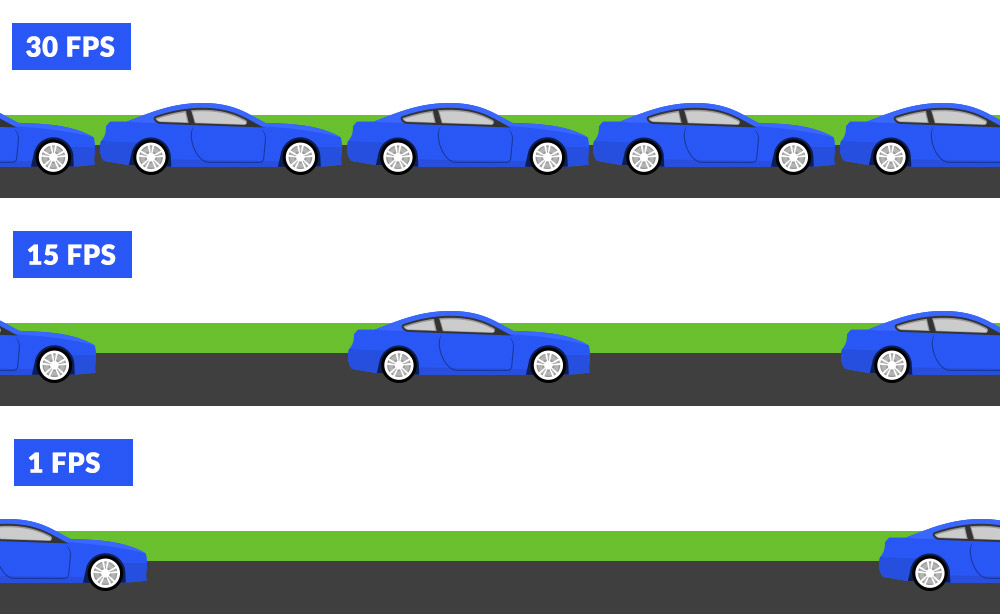When it comes to security cameras, frame rates are an important selling point. However, do you need a 60 FPS camera? What frame rate should you target?
In this article, we’ll share how camera frame rates work, visually show the differences between the most common FPS’s, and which FPS camera you should buy.
What is a Security Camera Frame Rate?
A video is actually multiple photos (known as frames) that appear right after each other. Videos that record 30 frames per second (FPS) captures 30 pictures every second.
The more frames a video has, the smoother it looks.
In the example below, we show what a car going past might look like at various FPS’s.

A lower frame rate looks rougher, with more time in between each frame. We’ve demonstrated it here in our Security Camera FPS example video below.
Frame Rate (FPS) Example:
What Is a Good Frame Rate for Security Cameras?
A good frame rate for security cameras is around 15 to 30 FPS. Video footage recorded at 30 FPS is ideal for identifying intruders or threats. The industry standard hovers around 15 FPS as of 2019.
However, 30 FPS is slowly becoming the industry standard as high-quality security cameras become more affordable.
What’s More Important than Camera Frame Rate?
While storage has gotten cheaper over the years, video footage still takes a large chunk of memory. HD cameras recording 60 FPS of footage will use more storage space than footage recorded at 30 FPS or lower because there are more frames.
Transmitting recorded video footage from wireless cameras over Wi-Fi to your computer or NVR means your network speed needs to keep up with your videos’ size.
Finally, resolution and shutter speed are also important considerations. The resolution will make your footage clear, and the shutter speed combats against blurriness.
Frame Rate vs. Other Camera Features
Other camera features like resolution, software programs, and shutter speed are also important besides frame rate.
Higher resolution videos have more pixels in a frame, so it has more detail. This will help with identifying intruders.
Some cameras also come with intuitive software features, like motion detection, line detection, or PIR detection (infrared). These features alert you through your phone or computer when someone enters the camera’s view. These cameras record at 10 FPS on standby but start recording higher FPS footage when motion or line detection is triggered, saving you on storage space. We explain this in more detail in our Security Camera Guide.